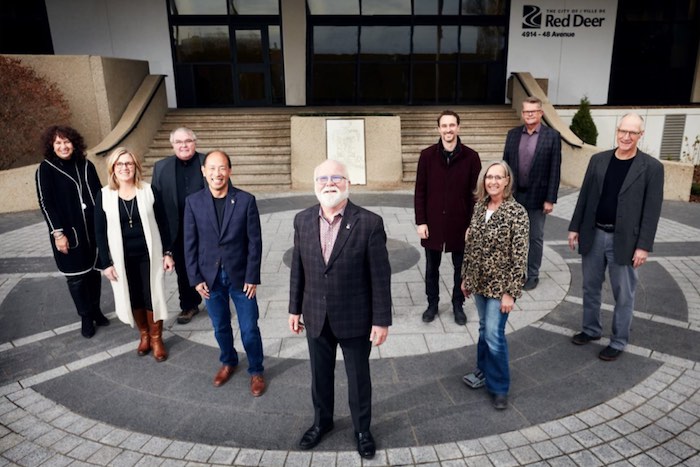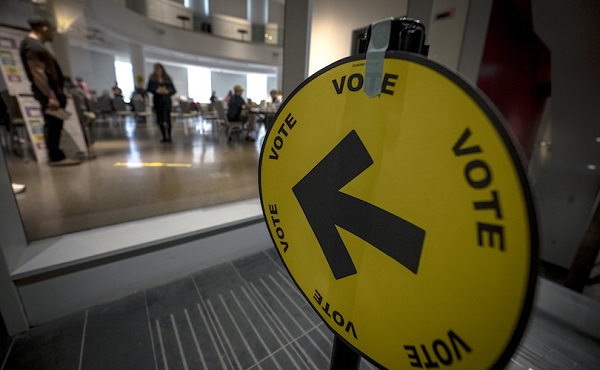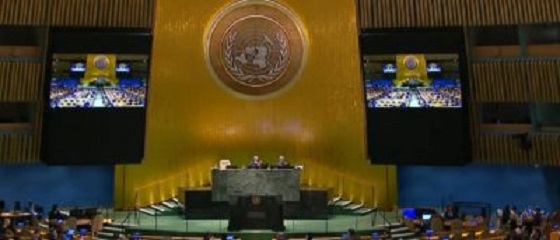City of Red Deer
City releases Annual Financial Report for 2022

Financial Statement Highlights & Analysis
Operating Results
2022 has been an unprecedented year for The City with the economy recovering from the COVID-19 pandemic and the Bank of Canada hiking interest rates to help mitigate rising inflation. These issues, not unique to Red Deer, are posing challenges to The City’s current financial strategy.
Total operating revenue has increased by $8.1 million (3%) over last year but fell short of budget by $14.7 million (4%).
User fees and sale of goods went up by $11.9 million due to an increase in service levels after the pandemic in recreation facilities, transit, and utilities. Most of the increase is in land sales.
Unfortunately, the recovery did not return The City’s operations to pre-pandemic levels. The expectation of revenue increases in those areas exceeded actual results.
Operating expenses were also heavily impacted. Pandemic recovery as well as higher inflation have contributed to the general increase in expenses over last year in the amount of $20.2 million (5%). These increases come in the form of higher fuel costs in transportation and fleet, higher transmission costs and tariffs for electric light and power, and increased salaries at recreation facilities, transit, as well as ongoing overtime for police and emergency services.
On an object basis, these increases are primarily impacting salaries, contracted services, and materials and supplies expense, offset by the decrease in grants to organizations. The City planned on these costs rising, however, and came within $3.5 million (1%) of budgeted expenses.
Due to lower-than-expected revenue and increasing expenses, The City reported an operating deficit of $43.5 million for the year ended December 31, 2022. This is $11.2 million (35%) over budget of $32.4 million.
Operating deficits can affect The City’s ability to fund operations in the future, as it has a direct impact on tax supported reserves. Reserves overall have declined by $21.3 million (11%); $18.7 million of that decrease is the Operating Reserve- Tax Supported (ORTS). The City budgeted a decline (use) of ORTS during 2022 and expected a year-end balance of $17.5 million, however due to the operating deficit, the actual year-end balance is now $8.9 million.
Taken together, tax-supported activities (general government services, protective services, transportation, community services, and recreation, parks, and culture) reported a deficit before capital related revenues of $71.5 million. This is mostly related to depreciation on tangible capital assets which The City does not fund through taxes, but through equity in tangible capital assets. The remaining 25% of the shortfall must be funded through ORTS.
The main areas attributing to the unexpected shortfall in tax supported operations is the RCMP contract and the Kinsmen arena contaminated site accrual as well as lower-than-expected tax-supported revenues, namely investment income, transit, recreation, and fines. These shortfalls are somewhat offset by higher staff vacancies and lower finance charges in transportation and higher community services grants.
Despite this concerning decline in ORTS, self-supported operations are holding steady with no significant change from prior year when taken as a whole. The City expected the use of reserves during the past three years: future budgets will need to improve these key reserves. A revised reserve policy will be forthcoming to Council with a recommended minimum balance for ORTS.
Capital Results
The City’s capital expenditures revealed a little less activity compared to last year. This is due to one of the COVID-19 grant programs ending in 2022, leaving the COVID-19 Resilience grant until December 31, 2023. Total capital grant revenue recognized in the year is $46.7 million, which is $8.6 million (23%) more than projected and $1.9 million (5%) more than last year. The City put more emphasis on utilizing grants while they are still available and less on borrowing and capital reserve.
In 2022, total capital expenditures of $105.2 million were financed with 44% capital grants, 33% reserve, 18% debenture borrowing, and 5% developer fees and other external sources.
The capital activities for The City have resulted in an overall annual surplus of $9.7 million, which is much lower than prior year and lower than budgeted. This shows that The City has become increasingly dependent on capital grants to grow its accumulated surplus. However, it is important to note that all of this surplus is used to purchase tangible capital assets and is not available for operations.


Financial Position
The statement of financial position tells its own story. Both financial assets and liabilities declined over last year. Municipal Sustainability Initiative (MSI) and Canada Community Building Fund (CCBF) advances for 2022 have fallen by roughly half. Although, this did not change the amount of grant revenue reported in 2022, it did reduce both government transfers receivable and deferred government transfers. This indicates potential declines in capital grant revenue reported in the future, especially as the COVID-19 Resilience grant comes to an end.
Because the decrease in financial assets exceeded the decrease in liabilities, the net debt has increased by $21.2 million (20%) from prior year.
Impacts from COVID-19 recovery and rising costs are reflected in The City’s financial position as well. Lower capital expenditures in 2022 have freed up more cash flows to invest in short term deposits to take advantage of the higher interest rates. Losses on sale of long-term investment has also occurred, resulting in lower investment earnings recognized as short term interest is allocated to The City’s various deferred revenue balances.
The market value of The City’s investments fell over 6% to the investment cost, the largest decline in recent memory. Actual investment losses are not realized unless the investments are sold. Management believes that these declines are temporary as interest rates stabilize and the bond market adjusts to a higher interest rate environment.
Debt Limit
The City’s investment portfolio is not the only area affected by a higher interest rate environment. The cost of new borrowing will increase into the foreseeable future. Though, The City has reported no substantial increase in finance charges for 2022, the debt servicing limit is more forward looking. Despite higher revenues resulting in higher debt service limit of $89 million, total debt servicing costs have risen at a higher rate, resulting in an increase in debt service limit to 37%, up from 36%. This is largely due to full years’ worth of payments on the $19 million debenture issued September 2021 for The Westerner Exposition Association. Although a 1% increase is not a cause for concern on its own, it is important to note that, going forward, the more expensive new debt becomes, the higher the debt servicing limit will grow relative to the debt limit.
This is illustrated by The City’s debit limit decreasing even though debt servicing increased. The debt limit percentage is now at 56%, down from 58% due to higher revenues and long-term debt remaining relatively unchanged.

In Summary
With no changes to service levels, no increases to property taxes combined with increased costs during the past three years has culminated in The City relying heavily on operating reserves, specifically the ORTS. This is a trend The City must improve upon in the upcoming years.
While The ORTS is an area of concern, other indicators do provide a positive picture. Utility operations remain stable and well managed, the use of debt has leveled off, and the investments made to our assets are strong. Administration has more control over costs, which are managed well, and less control over revenues, which have not achieved our planned levels.
The task before us is to maintain what we are doing right and to improve upon our key reserve balances. The City’s future budgets are moving away from a reliance on reserves as a funding source and plan to update the reserve policy to prop up reserve balances. Our next two years will also see the City develop a Long Term Financial Plan and an overall values based service level review.
Respectfully submitted,
Ray MacIntosh, MBA, CPA, CGA Chief Financial Officer
May 1, 2023

(a) Salary includes regular base pay, overtime, lump sum payments, gross honoraria, and any other direct cash remuneration. The City does not pay bonuses to employees.
(b) Employer’s share of all employee benefits and contributions or payments made on behalf of employees including pension, health care, dental coverage, group life insurance, long and short- term disability plans, professional memberships, tuition, and car allowance. Benefits and allowances also include supplementary employee retirement plan payments and moving and relocation allowances.
(c) Benefits for City Councillors include accidental death and dismemberment, group life, health care, dental coverage, registered savings plan, internet and phone allowances, transit, and Canada Pension Plan.
(d) Included in benefits for the City Manager is a lump sum payout from the Muni SERP retirement plan in the amount of $133 in 2022.
City of Red Deer
Cindy Jefferies is Mayor. Tristin Brisbois, Cassandra Curtis, Jaelene Tweedle, and Adam Goodwin new Councillors – 2025 Red Deer General Election Results

Showing official results for: Mayor of The City of Red Deer
| # | Candidate Name | Votes | Percentage |
|---|---|---|---|
| 1 | JEFFERIES, Cindy | 6237 | 41% |
| 2 | SCOTT, Gareth | 3483 | 23% |
| 3 | DOERKSEN, Victor | 3143 | 20% |
| 4 | LEE, Lawrence | 2215 | 14% |
| 5 | GALLAGHER, John | 298 | 2% |
| Rejected Ballots | 0 | 0% |
Showing official results for: Councillor of The City of Red Deer
| # | Candidate Name | Votes | Percentage |
|---|---|---|---|
| 1 | BRISBOIS, Tristin | 6703 | 7% |
| 2 | CURTIS, Cassandra | 6422 | 7% |
| 3 | KRAHN, Chad | 6249 | 7% |
| 4 | BARNSTABLE, Kraymer | 6235 | 7% |
| 5 | WYNTJES, Dianne | 6069 | 7% |
| 6 | TWEEDLE, Jaelene | 5635 | 6% |
| 7 | GOODWIN, Adam | 5290 | 6% |
| 8 | BURUMA, Bruce | 5241 | 6% |
| 9 | GOULET-JONES, Calvin | 5050 | 5% |
| 10 | HUIZING, Hans | 4810 | 5% |
| 11 | BOUCHARD, Brandon | 4528 | 5% |
| 12 | MACDONALD, Ashley Jason | 3832 | 4% |
| 13 | BUCHANAN, Buck | 3660 | 4% |
| 14 | MOHAMOUD, Zainab | 3478 | 4% |
| 15 | SYPKES, Thomas | 3459 | 4% |
| 16 | BECK, Gabriel | 3370 | 4% |
| 17 | PARKS, Gail | 2809 | 3% |
| 18 | YZERMAN, Calvin | 2265 | 2% |
| 19 | WILE, Haley | 1986 | 2% |
| 20 | COMÉTE, Christian | 1843 | 2% |
| 21 | KLERKS, Kevin M. | 1699 | 2% |
| 22 | ROBINSON, Don | 1296 | 1% |
| 23 | MARTIN, Greg | 656 | 1% |
| 24 | KLYWAK, Anthony | 444 | 0% |
| Rejected Ballots | 0 | 0% |
Showing official results for: Trustee of the Red Deer Public School Division
| # | Candidate Name | Votes | Percentage |
|---|---|---|---|
| 1 | SOMMERS, Angela | 3320 | 9% |
| 2 | BUCHANAN, Nicole | 3180 | 9% |
| 3 | MACAULAY, Dianne | 3119 | 8% |
| 4 | WATTERS, Jim | 3038 | 8% |
| 5 | BAIRD SMITH, Emilee | 2753 | 7% |
| 6 | DAVIES, Nathan | 2749 | 7% |
| 7 | DALSTRA, Jason | 2722 | 7% |
| 8 | CHRISTENSEN, Sheri | 2701 | 7% |
| 9 | PARKER, Jenessa | 2581 | 7% |
| 10 | PEACOCKE, Cathy | 2573 | 7% |
| 11 | WILLIAMS, Danielle | 2342 | 6% |
| 12 | ODISHAW, Shelley Lynn | 2187 | 6% |
| 13 | SYMONS, Jessica | 1881 | 5 |
Trustee of the Red Deer Catholic Separate School Division, Red Deer Area Ward
| # | Candidate Name | Votes | Percentage |
|---|---|---|---|
| 1 | ANDREW, Chris | 2020 | 14% |
| 2 | MACDONALD, Brenda | 1354 | 10% |
| 3 | REED, Martin (Marty) | 1082 | 8% |
| 4 | LEYSON, Cynthia | 1050 | 8% |
| 5 | HUBER, Emily | 1037 | 7% |
| 6 | HOLLMAN, Murray | 1036 | 7% |
| 7 | DONOVAN, Matthew | 1021 | 7% |
| 8 | GROENEN, John | 974 | 7% |
| 9 | STEEVES, Rod | 921 | 7% |
| 10 | PASULA, Kim | 911 | 7% |
| 11 | BECK, Gabriel | 825 | 6% |
| 12 | HUNTER, Ashley | 811 | 6% |
City of Red Deer
Plan Ahead: Voting May Take a Little Longer This Election Day

News release from the City of Red Deer
Voters are encouraged to plan their vote and allow a little extra time at the polls this Election Day, Monday, October 20.
Because this year’s election uses Alberta’s new Permanent Elector Registry, voting may take slightly longer than in previous years. Municipalities are required to provide updated voter information back to the province after the election. As a result, many voters will be asked to complete an Elector Register Form (Form 13) at the voting station — even if they are already registered to vote. This ensures that voter information is accurate and up to date. Once the registry information has been updated, all forms are securely shredded.
Additionally, the Permanent Elector Registry is not shared with local school boards, so anyone voting for a School Board Trustee must also complete an Elector Register Form (Form 13).
We appreciate voters’ patience as our election teams work to ensure every eligible voter can cast their ballot accurately and securely. Once the voting process begins, most voters complete their vote in about 10 minutes.
To help avoid lineups, voters can visit Red Deer Elections website to check real-time wait times at each voting station and choose the location with the shortest line.
Anyone who arrives at a polling station and joins a line before 8 p.m. will be able to vote.
Thank you for your understanding and for taking the time to make your voice heard in Red Deer’s 2025 Municipal and School Board Election.
-

 Alberta1 day ago
Alberta1 day agoNational Crisis Approaching Due To The Carney Government’s Centrally Planned Green Economy
-

 Carbon Tax21 hours ago
Carbon Tax21 hours agoCarney fails to undo Trudeau’s devastating energy policies
-

 Agriculture1 day ago
Agriculture1 day agoFederal cabinet calls for Canadian bank used primarily by white farmers to be more diverse
-

 Business22 hours ago
Business22 hours agoThe UN Pushing Carbon Taxes, Punishing Prosperity, And Promoting Poverty
-

 Health20 hours ago
Health20 hours agoNEW STUDY: Infant Vaccine “Intensity” Strongly Predicts Autism Rates Worldwide
-

 COVID-192 days ago
COVID-192 days agoNew report warns Ottawa’s ‘nudge’ unit erodes democracy and public trust
-

 Business19 hours ago
Business19 hours agoClimate Climbdown: Sacrificing the Canadian Economy for Net-Zero Goals Others Are Abandoning
-

 Great Reset1 day ago
Great Reset1 day agoCanadian government forcing doctors to promote euthanasia to patients: report



